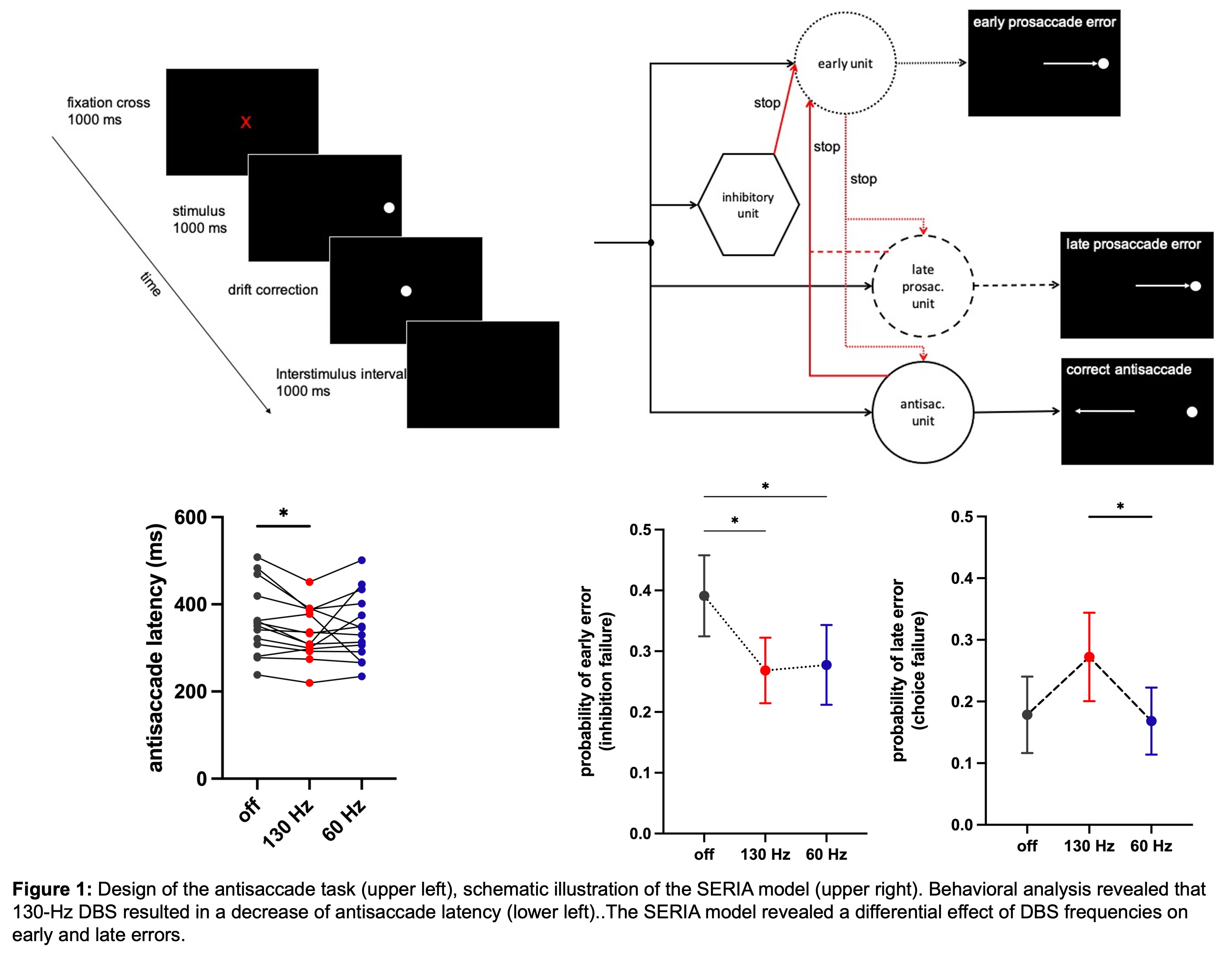Category: Parkinson's Disease: Cognitive functions
Objective: The aim of this project was to investigate how high- and low-frequency deep brain stimulation (DBS) modulate impulsive actions in the antisaccade task as well as their cortical correlates.
Background: While DBS in the subthalamic nucleus (STN) improves motor functions in Parkinson’s disease (PD), it has also been associated with impulsivity.
Method: Eye-tracking and high-density EEG of 14 patients with PD and chronic STN-DBS were recorded during an antisaccade task stimulating with 60 Hz, 130 Hz, and off stimulation. Computational modelling of the behavioral data using the Stochastic Early Reaction, Inhibition, and late Action (SERIA) model allowed differentiation between response inhibition and action selection processes. Time-frequency representations of oscillatory power in the theta, alpha and beta bands were compared over a midfrontal region-of-interest which has been associated with cognitive control.
Results: Sixty Hz and 130 Hz-DBS reduced the rate of early reflexive errors compared with off-DBS state. Correspondingly, both frequencies led to an increased desynchronization of beta power during the pre-stimulus period. In contrast to 60 Hz-DBS, 130 Hz-DBS caused an acceleration and error-proneness of later actions. While higher midfrontal theta power predicted longer response latencies in off-DBS state on a trial-by-trial basis, 130 Hz DBS reversed this relationship.
Conclusion: Against expectations, both 130 Hz and 60 Hz-DBS improved response inhibition, potentially via proactive activation of oculomotor networks. 130 Hz DBS seems to disrupt theta-mediated cognitive control involved in delaying action selection. Sixty Hz-DBS may provide beneficial effects on response inhibition without the detrimental effect on action selection seen with 130 Hz-DBS.
To cite this abstract in AMA style:
J. Waldthaler, A. Sperling, A. König, F. Bremmer, L. Timmermann, D. Pedrosa. High- and Low-Frequency Deep Brain Stimulation in the Subthalamic Nucleus differentially modulate Response Inhibition and Action Selection in Parkinson’s Disease [abstract]. Mov Disord. 2022; 37 (suppl 2). https://www.mdsabstracts.org/abstract/high-and-low-frequency-deep-brain-stimulation-in-the-subthalamic-nucleus-differentially-modulate-response-inhibition-and-action-selection-in-parkinsons-disease/. Accessed January 7, 2026.« Back to 2022 International Congress
MDS Abstracts - https://www.mdsabstracts.org/abstract/high-and-low-frequency-deep-brain-stimulation-in-the-subthalamic-nucleus-differentially-modulate-response-inhibition-and-action-selection-in-parkinsons-disease/


